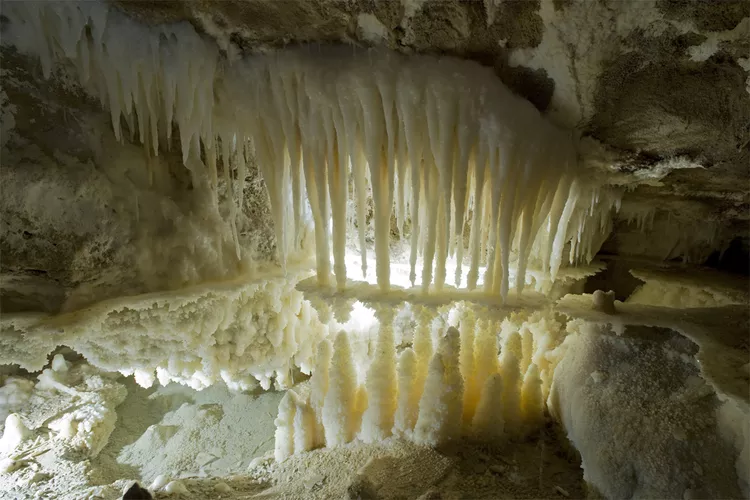1. Overview
Italy boasts more than 10,000 documented caves, making it an exceptional destination for cave exploration. From mountain caverns to coastal grottoes, these caves offer unique experiences for visitors. Most caves can only be accessed via guided tours, although advance reservations may not be necessary. With specially designed lit walkways, many of these caves also contain varying numbers of stairs. It’s advisable to wear sturdy walking shoes as temperatures in the caves can be chilly. Below are some of Italy’s most remarkable caverns and caves to explore.
Frasassi Caves

The Grotte di Frasassi features some of Italy’s most stunning caverns. The guided tour lasts 1 hour and 15 minutes, showcasing several chambers filled with impressive stalactites and stalagmites, including a massive formation large enough to contain Milan’s cathedral. These caves are located in the central Marche region of Italy.
Corchia Underground Cave

Monte Corchia, or the Empty Mountain, houses one of Europe’s largest cave systems. Located in the Apuan Alps of northern Tuscany, approximately 16 kilometers inland from the coastal resort town of Forte dei Marmi, the site offers a 2-hour guided tour that reveals about 2 kilometers of the extensive 70-kilometer underground caverns. Encounter breathtaking stalactites, stalagmites, and small underground lakes. Nearby Equi Terme prehistoric caves and Grotta di Vento are also found in Northern Tuscany.
Monte Cucco Cave

The Grotta di Monte Cucco, located in Umbria region’s Monte Cucco Park, ranks as one of the world’s deepest cave systems. Only an 800 meter portion of the approximately 20-kilometer cave is accessible to visitors through guided tours, featuring three colossal caverns: Cattedrale, Sala Margherita, and Sala del Becco.
Visitors are greeted with a daunting 27-meter initial drop on steep stairs at the cave entrance, as it is located near the mountain’s summit. There are three touring levels of difficulty; two options require advance arrangements.
Grotte di Pertosa

Located south of Naples, near Padula and its famous Charterhouse, the Grotte di Pertosa offers a thrilling 2-hour tour that leads visitors through a lengthy cave adorned with beautiful caverns. A unique aspect of this experience is that part of the tour includes a small boat ride across a vast lake inside the cave.
Grotta Gigante

The Grotta Gigante, or Giant Cave, has been accessible to the public for over a century, securing its place in the Guinness Book of World Records in 1995 as the world’s largest tourist cave. This cave features a vast main chamber that visitors reach by traversing stairs through a downhill tunnel. Notable formations inside include the towering Colonna Ruggero, which reaches 12 meters in height.
Guided tours last about one hour and the site is conveniently located approximately 10 kilometers from Trieste in northeastern Italy’s Friuli-Venezia Giulia region.
Grotte di Stiffe Caverns in Abruzzo

As a river flows through the Grotte di Stiffe, visitors can admire its stunning waterfall, which is most spectacular in the spring. This cave also features captivating stalactite and stalagmite formations. The 1-hour guided tour spans 700 meters along an easy walkway that includes some stairs. Located in central Italy’s Abruzzo region, it lies about 17 kilometers southeast of L’Aquila.
Grotte di Castellana

Grotte di Castellana is a sprawling network of caverns featuring stunning stalagmites and stalactites set within a limestone plateau. One of the accessible chambers offers a natural skylight, while another is known as the remarkable white cave or grotta bianca. Visitors can select from either a short or long guided tour that explores the caves.
The shorter tours last approximately 50 minutes and cover one kilometer, while the comprehensive tours span three kilometers and take around 2 hours. The site also features a museum and observatory. Grotte di Castellana is situated in southeastern Italy’s Puglia region, just 11 kilometers from the coast and 17 kilometers north of Alberobello.
Blue Grotto

The Blue Grotto, known as Grotta Azzurra, is perhaps Italy’s most famous sea cave and a major attraction on the island of Capri. The cave’s shimmering blue water results from sunlight refraction, creating an enchanting view for visitors.
Historically significant since prehistoric times, the grotto was a favored retreat for Romans during Emperor Tiberius’s rule, who had villas on Capri. Access is limited to rowboat tours through this stunning cave.
Neptune’s Grotto

Grotte di Nettuno, or Neptune’s Cave, is situated just above sea level at the base of a cliff close to Alghero on Sardinia (refer to map) and remains inaccessible during rough sea conditions. Visitors can reach the entrance by boat from Alghero (information) or through a stairway carved into the cliff with a daunting 654 steps. Guests are guided through a lighted path, showcasing both stalactite and stalagmite formations along with a saltwater lake within the cave.
Sassi or Cave Settlement in Matera

Matera, located in southern Italy’s Basilicata region, features a captivating cave district that was inhabited for centuries. Numerous Rupestrian churches are open for exploration, and a traditional cave house replica is available for visitors. Additionally, refurbished caves have been transformed into hotels and restaurants.
Carrara Marble Quarries

When visiting marble-producing regions, such as Carrara in Tuscany, you might encounter signs that feature the term Cave. In Italian, Cave refers to quarries (singular: cava), indicating you’re seeing a marble quarry rather than an underground cave. Some, like Fantiscritti, offer guided tours, and even simply driving by can provide a fascinating view of the quarries.





